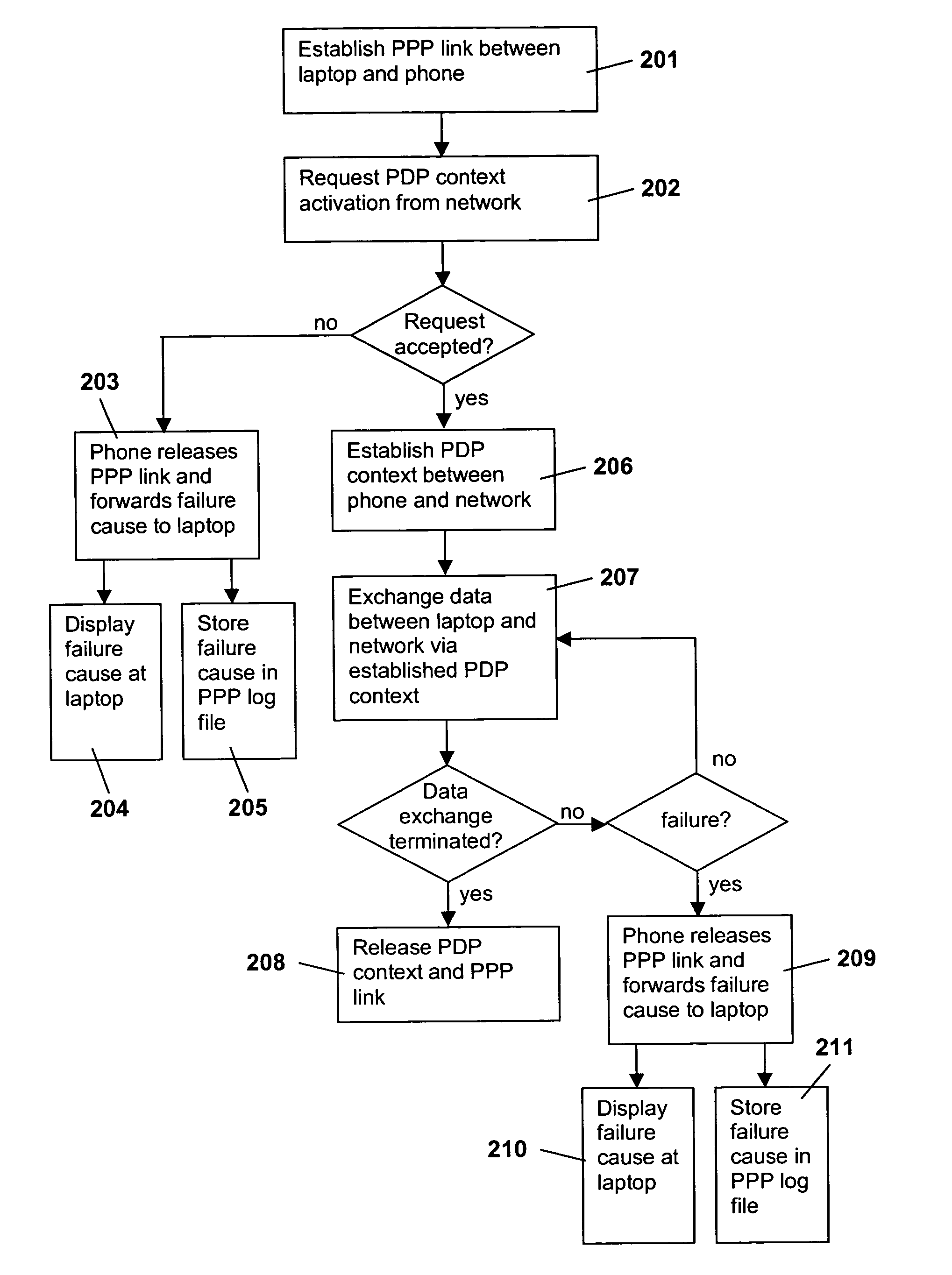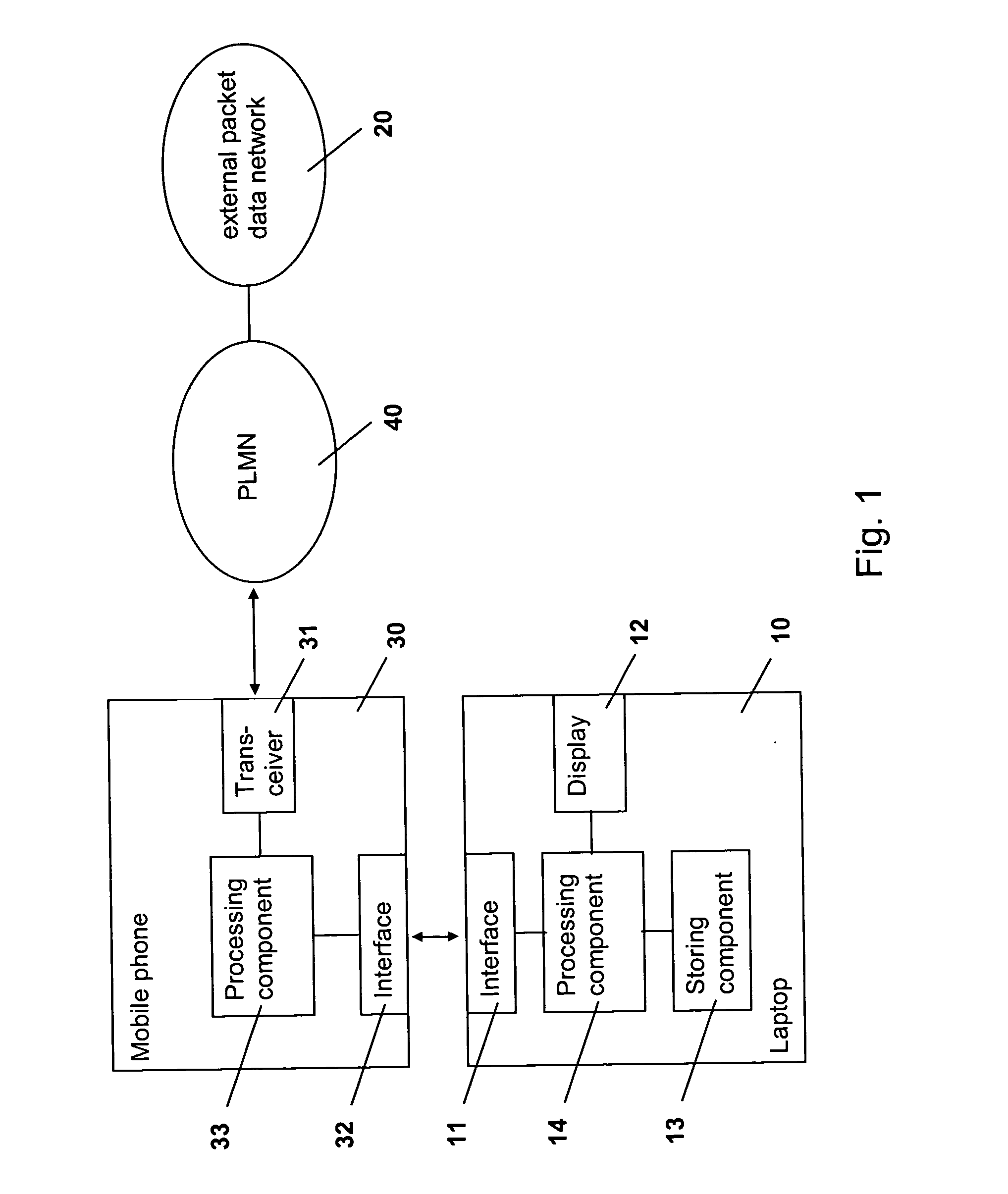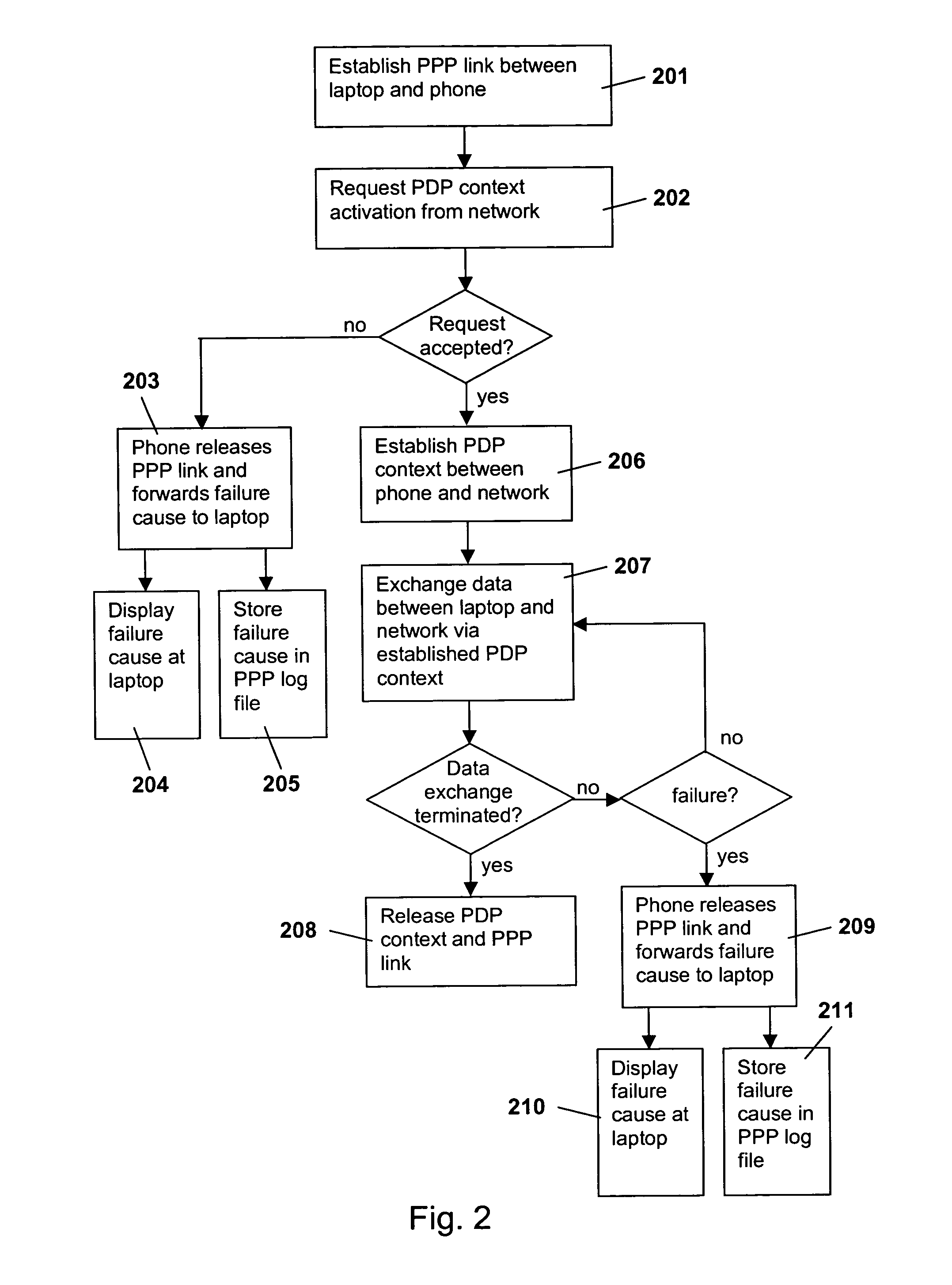Arrangement for supporting data exchange between terminal equipment and a mobile communication network via a mobile terminal
a mobile terminal and data exchange technology, applied in the field of mobile terminals, can solve the problems of textual error message display, failure of setup, and premature release of already established connections from the network sid
- Summary
- Abstract
- Description
- Claims
- Application Information
AI Technical Summary
Benefits of technology
Problems solved by technology
Method used
Image
Examples
Embodiment Construction
[0027] The invention can be implemented for example in the system depicted in FIG. 1. In this system, a terminal equipment 10 may access an external packet data network 20 via a mobile terminal 30 and a mobile communication network 40.
[0028] The terminal equipment 10 of the system is assumed by way of example to be a laptop computer. The laptop computer 10 comprises an external interface 11, a display 12 as a user interface, a storing component 13 and a processing component 14. The processing component 14 is connected to each of the external interface 11, the display 12 and the storing component 13. The processing component 14 is designed specifically for realizing the invention, as will become apparent further below. It is to be understood that also the processing component 14 can be composed of one or of several components, that it may comprise software and / or hardware elements for the required processing, and that it can be connected to the external interface 11, the display 12 ...
PUM
 Login to View More
Login to View More Abstract
Description
Claims
Application Information
 Login to View More
Login to View More - R&D
- Intellectual Property
- Life Sciences
- Materials
- Tech Scout
- Unparalleled Data Quality
- Higher Quality Content
- 60% Fewer Hallucinations
Browse by: Latest US Patents, China's latest patents, Technical Efficacy Thesaurus, Application Domain, Technology Topic, Popular Technical Reports.
© 2025 PatSnap. All rights reserved.Legal|Privacy policy|Modern Slavery Act Transparency Statement|Sitemap|About US| Contact US: help@patsnap.com



